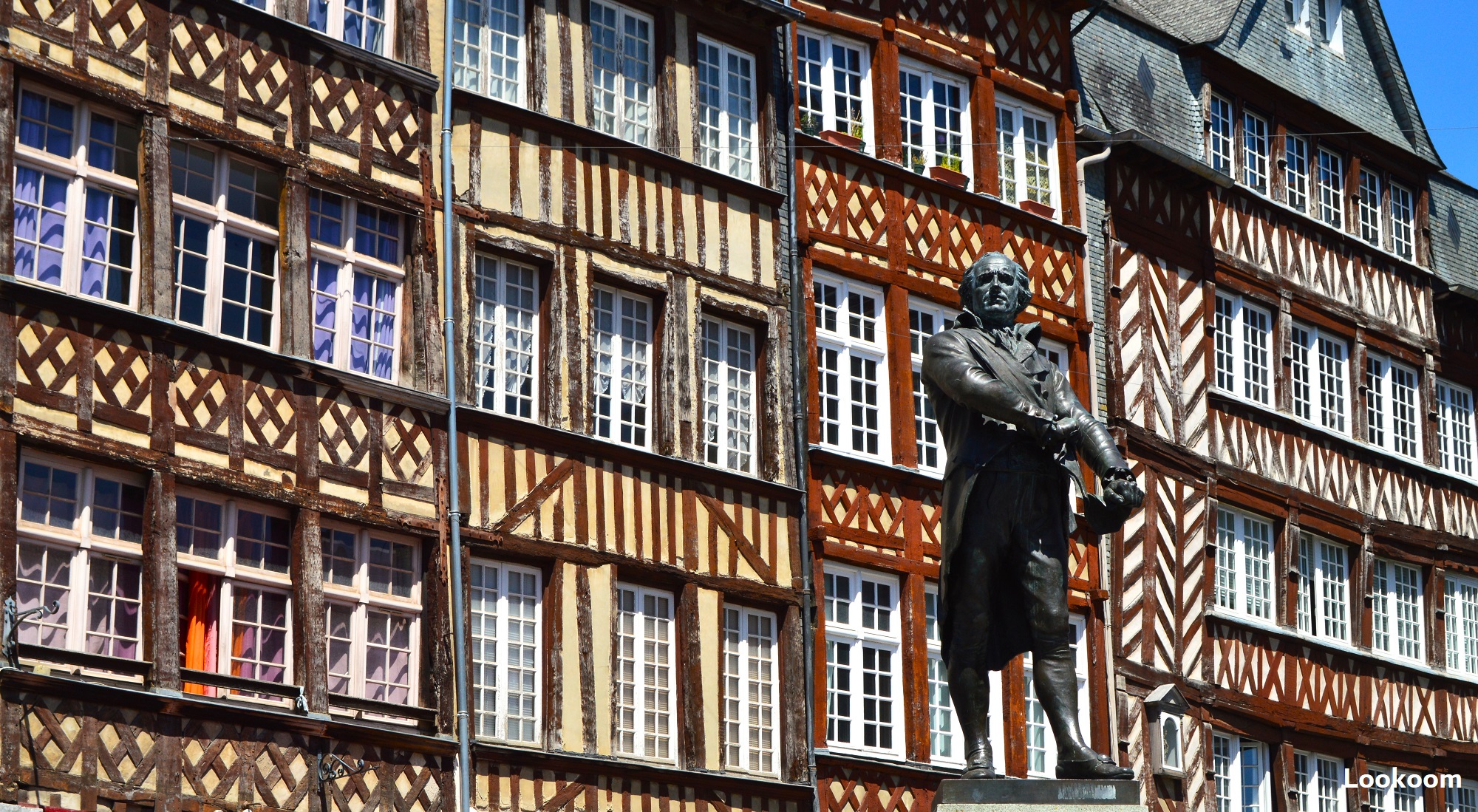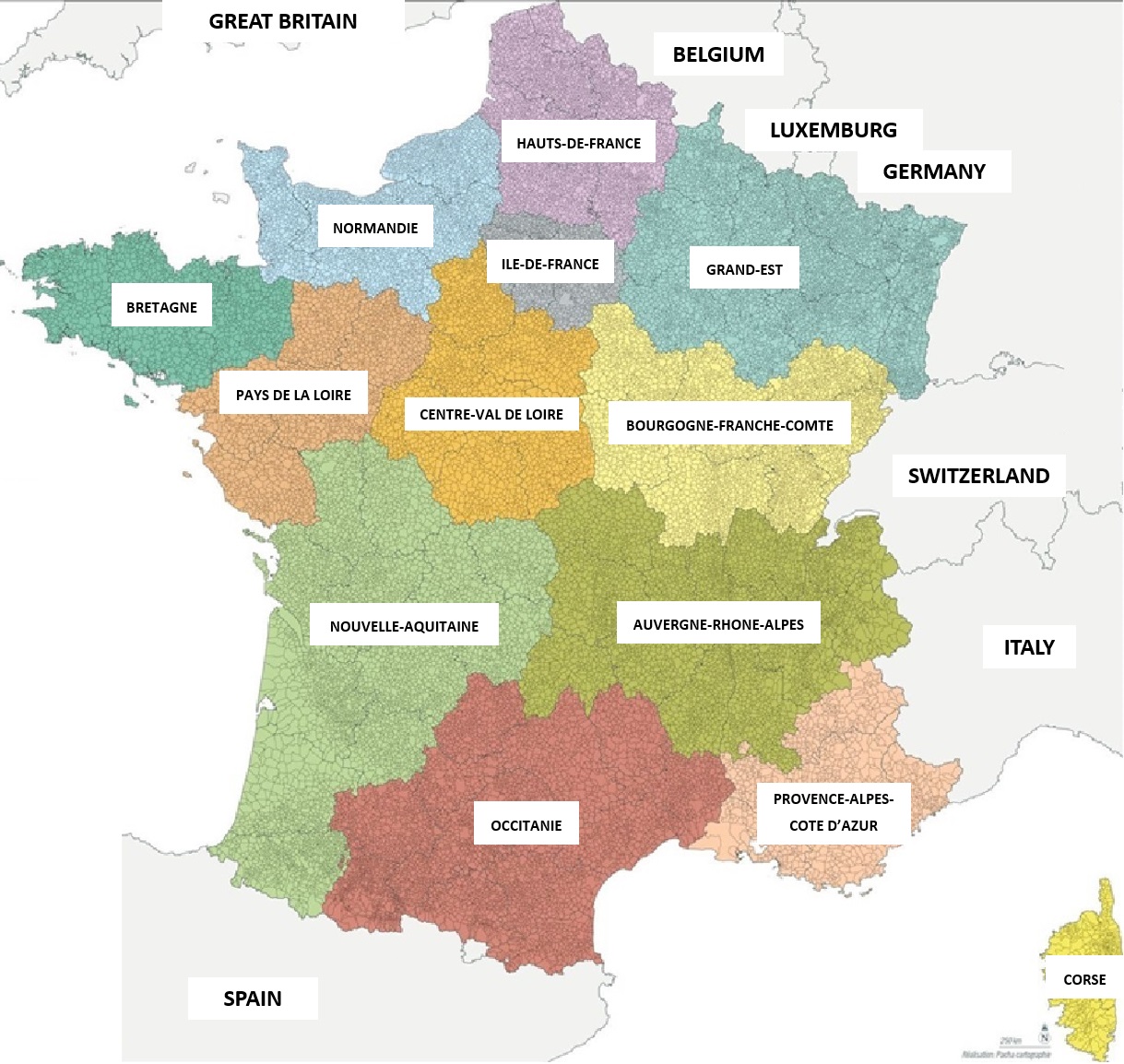Rennes: Top 10
(continuer en français) – Published: October 14, 2022

Brittany is a region with a strong identity but with unclear boundaries. Nantes, the capital of the Dukes of Brittany, was assigned to a different region, therefore Rennes is the current capital of the administrative region. The structure of the centre of Rennes is mainly the result of the reconstruction after the great fire of 1720.
01. City Hall
After the fire of 1720, the king of France’s architect was commissioned to design the new city hall, like a symbol of integration with the rest of the country. The two wings are separated by a clock tower. In the past, one part was also used by the university. In front of the building there is a large square, the venue for public gatherings.


02. Opera
The Rennes Opera House is located opposite the City Hall, on the other side of the large central square. Although it was built later, the convex shape of its rounded front seems to respond to the concave line of the city hall. Desired for reasons of prestige, the opera house participates in the city’s cultural policy, notably through open-air performances.
03. Mordelaise Gate
This is the main gateway to the old walled city. The origin of the wall dates back to the 3rd century and it has been reinforced and extended several times since the Romans. Situated a bit away from the city centre, an effort has been made to highlight it and the barbican that precedes it. The drawbridge was even reinstalled in 1997.


04. Cathedral
The Mordelaise Gate has long led to the city’s main sanctuary. This is where the Gothic cathedral was built in the 12th century, which collapsed. In its place the classical façade was built in the 17th century, and the nave was finally rebuilt in the 19th century. A beautiful altarpiece carved in Antwerp in 1520 is displayed in the Cathedral Treasury.
05. St. George’s Palace
This impressive facade was originally an abbey built in 1670, which became a barracks during the Revolution and was badly damaged by fire in 1921. Rebuilt and modernised, the building is now home to the municipal services as well as the fire brigade and police. Its well-kept garden is open to the public.


06. Brittany Parliament
Initially an assembly of Breton nobles, the Parliament became an institution of the French monarchy, abolished during the Revolution. The Court House was established in this building, which was begun in 1618. In 1994 it was accidentally burnt down during a fishermen’s demonstration. It was then rebuilt identically, embodying the permanence of the State and the pride of Brittany.
07. Place des Lices market
Situated just outside the old city walls, the Place des Lices was used for equestrian jousting tournaments. More than four centuries ago, the market was temporarily installed there. Every Saturday morning the market sells both seafood and agricultural products from a region known for its rural traditions. Nowadays, the market is increasingly used for on-site catering.


08. Half-timbered houses
The old half-timbered houses are one of the main sights in the centre of Rennes. Despite the fire of 1720, some of them survived, while others were rebuilt in stone. Thus the Place du Champ-Jacquet has a fine group of them dating from the 17th century. The statue of Jean Leperdit, honours a mayor known for his moderation during the Revolution.
09. Thabor Park
The Parc du Thabor covers some ten hectares and was created from the estate of a Benedictine abbey. The park has been laid out in several distinct areas, including a beautiful botanical garden. There are also some animals and a waterfall, the orangery has been partly transformed into an exhibition area, and a kiosk allows open-air concerts.


10. Confluence Garden
At the confluence of the Ille and Vilaine rivers, outside the city centre, several recent buildings give a modern look to the area. A small garden aims to reinstate endemic plants in the heart of the city. There are anglers and ducks, and pedal boats, kayaks and electric boats can be hired nearby.
To be informed of upcoming articles, register here (it’s free!).
Articles about France:
…

Auvergne-Rhône-Alpes
Bourgogne-Franche-Comté
Bretagne
Centre-Val de Loire
Grand Est
Hauts-de-France
Ile-de-France
Normandie
Nouvelle-Aquitaine
Occitanie
Pays de la Loire
Provence-Alpes-Côte d’Azur
To be informed of upcoming articles, register here (it’s free!).

Some very impressive looking buildings. This looks like an underrated tourist destination. Thanks for sharing. Allan
LikeLiked by 1 person
It’s true that Rennes wasn’t really a tourist destination, Brittany is more attractive for the coast. But with the development of the bullet train network, there has been an increase in city breaks in the major cities. Great efforts are therefore being made to attract visitors while offering a better living environment to the inhabitants. Thank you for reading.
LikeLike
Thanks to the French central government over the years but Nantes is part of Brittany already with the Breton flag in city hall and determine to be re attach officially. Rennes is the parliament of Brittany and Nantes the castle of the dukes! It is left once reunited who will be the capital! Cheers or as we say Kenavo!
LikeLiked by 1 person
You’re right, Nantes, Rennes, it’s an old issue, mostly of an administrative nature. On the ground, Bretons and visitors do not stop at the dotted lines on the map and see Brittany as a whole. Kenavo 🙂
LikeLike
I agree cheers from Breizh!
LikeLiked by 1 person
I enjoyed this look at yet another place in France I knew nothing about. Rennes looks lovely, I like how the two flanking sides of the city hall look like actual “wings” and not just the wings of a building. No wonder the half timbered houses are a main draw, they seem just as impressive as some of the ones I saw across England earlier this year. St. George’s Palace is a winner too, very very handsome. How long would you say one would need to really “do Rennes” at a leisurely pace of exploring?
LikeLiked by 1 person
This attraction we have for half-timbered houses is not really rational. Initially they were cheap constructions compared to houses built in stone. Cheap also means not looking for aesthetics, just cheap and functional. For Rennes, it is possible to see all the places I show in the same day. Going from one to the other you would also see the rest that is interesting to know. Then a second day for the museums, but if the weather is good it is difficult to spend a day indoors.
LikeLiked by 1 person
The Mordelaise Gate looks beautiful. Glad to hear that efforts have been made to reinforce and improve it. Reinstalling the drawbridge was a nice touch. I also love those half-timbered houses.
LikeLiked by 1 person
These fortifications are so typical of the Middle Ages that they give a real character to this part of the city. It is easy to imagine them as a film location.
LikeLiked by 1 person
We really must get to see and know more of northern France, I have such limited experience and no so little. Brittany and Normandy are so beautiful and so steeped in history and of course close to home…yet I’ve seen so little of it.
LikeLiked by 1 person
It’s true that history has left many traces, a complicated history between France and the United Kingdom.
LikeLiked by 1 person
looks historically splendid. and well worth a visit.
LikeLiked by 1 person
I agree, and then there is always the Breton question in the background which continues to maintain an active regionalism.
LikeLike
Merci pour ces images. Thank you. My mother was from Rennes, and though I spent a year in the Army nearby, all I know of Rennes is the Station… (In and out quickly)
Kenavo…
LikeLiked by 1 person
C’est souvent ainsi, on réalise plus tard qu’on est passé à côté de beaucoup de choses.
LikeLiked by 1 person
Oui. Mais un jour, sur le chemin de retour de la Bretagne, déjeunant à Vitré, j’ai réalisé que le village natal de mon grand-père, Piré-sur-seiche n’était qu’à qqs kms… Le détour a été vite décidé. Bonne soirée.
LikeLiked by 1 person